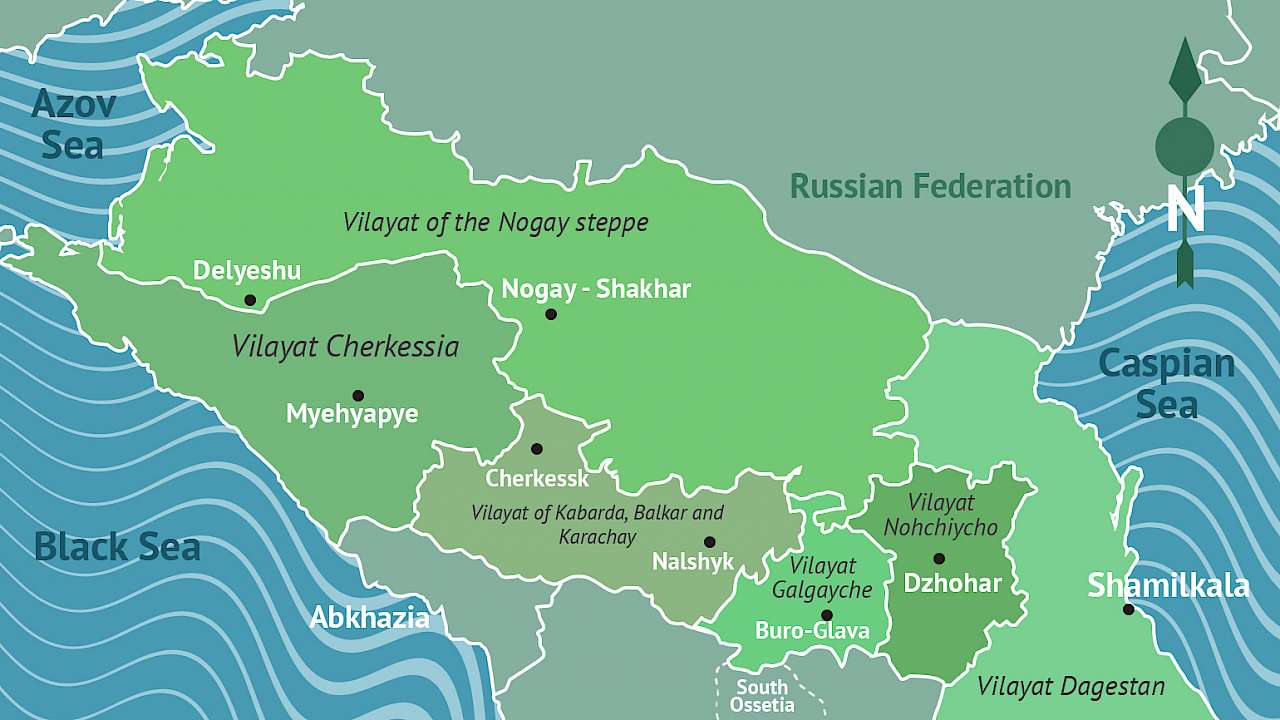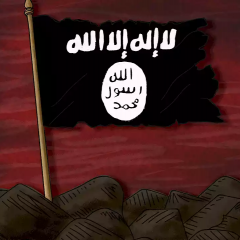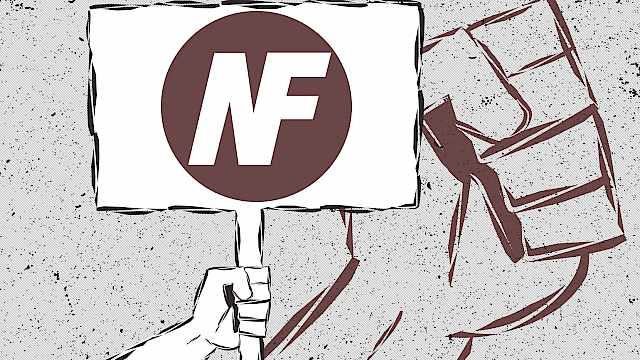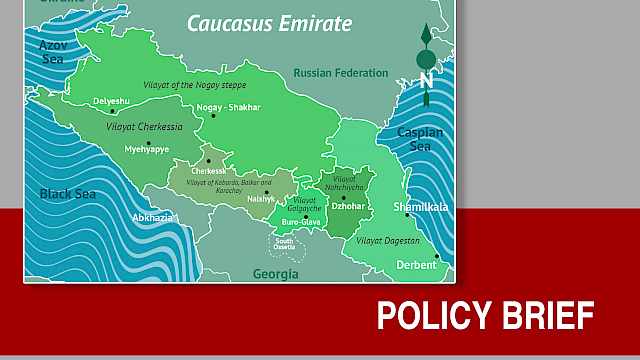The conflict in Syria and Iraq, now in its sixth year, has generated considerable interest and concern for its potential impact on regional and international stability. Despite this interest, however, significant aspects of the conflict remain understudied and poorly understood.
This report seeks to address one of these neglected areas by examining and contextualising the involvement of people from Russia and the former Soviet Union. The report is divided into four parts – two looking at the contemporary situation and two identifying lessons from the evolution of conflict in the North Caucasus – and offers the following conclusions.
Assessing the ‘Russian-speaking’ contingent in Syria and Iraq
People from around the world have migrated to the conflict in Syria and Iraq in unprecedented numbers, and citizens of Russia and other former Soviet states have accounted for a significant proportion of this ‘foreign fighter’ contingent. This has generated security concerns about whether they are likely to remain in theatre, return home, or migrate to other locations – either as combatants or civilians.
Up to mid-May 2017, Russian officials estimate that up to 4,000 Russian citizens have travelled to Syria and Iraq, with an additional 5,000 coming from former Soviet countries. This information cannot be independently verified and can only serve as a rough guide.
Data from Syria-related convictions support official claims that the majority of Russian citizens are from the North Caucasus, but also show an unprecedented nationwide mobilisation. The data suggests the conflict has appealed to audiences in a way previous – and potentially future – conflicts have not.
Citizens of Russia and other former Soviet countries – often referred to as ‘Russian-speaking’ because of shared cultural and historical heritage – are present in multiple groups, including those aligned with the Islamic State (IS) and al-Qaeda (AQ). Clear boundaries exist between IS-aligned and other groups, but those between non-IS groups appear much more fluid.
Several ethnic North Caucasian leaders in Syria have historical links with – and an ongoing interest in – the North Caucasus insurgency but are unlikely to be able to return home. Their groups are mutually hostile to Russia but divided over the legitimacy of targeting civilians, highlighting the importance of differentiating both between groups and the threat they pose to Russia and other countries.
The extent and limits of Russia’s domestic terrorism threat
The threat posed by ‘returnees’ from the conflict in Syria and Iraq features high on Russia’s domestic security agenda but is only one of several overlapping concerns. The North Caucasus has been a source of instability since the collapse of the Soviet Union, and the large number of people from the region fighting in the Middle East has prompted concerns about the potential rejuvenation of the domestic insurgency.
Elsewhere in Russia, supporters of radical Islamist ideologies have emerged from among the country’s sizeable Muslim and migrant worker population, and only some of these have travelled to Syria and Iraq. Moreover, extremist groups throughout Russia are able to tap into long-standing transnational networks.
The Islamic State (IS) has replaced the Imarat Kavkaz (Caucasus Emirate, IK) as the main insurgent group in the North Caucasus. The regional insurgency, however, has been in long-term decline, and IS faces the same operational pressures as the IK and has failed to transfer its appeal to local groups.
IS-claimed attacks in Russia have to date demonstrated only limited capacity, mainly involving attacking security service personnel with basic weapons to acquire firearms. This suggests IS is able to mobilise supporters but has thus far been unable to support more substantive attacks.
Very few returnees have linked up with the domestic insurgency, and those that did had only a negligible impact on its trajectory. Most planned attacks linked to Syria and Iraq have not involved returnees, but previously unknown actors inspired and potentially supported by groups operating there.
External threats are not limited to Syria and Iraq. Caucasian and Central Asian networks linked to Russia-based extremists have deep roots in Turkey and Afghanistan/Pakistan and have been linked to attacks in Russia. The size of Russia and its migrant communities and the extensive nature of (non-radical) post-Soviet transnational networks create multiple opportunities for attacks.
Learning from Foreign Fighters in the North Caucasus
The conflict in Syria and Iraq is far from the first to attract external participants. Foreign activists played an important role in the North Caucasus insurgency, impacting its trajectory, ideology and perceived legitimacy. The decline of this manifestation of the foreign fighter phenomenon can offer insights into how other conflicts may evolve, and how military defeat could impact groups like the Islamic State (IS).
Shortcomings in how the ‘foreign fighter’ concept is defined and a failure to account for its complexity and the full range of activities transnational activists engage in undermine our ability to understand the phenomenon.
Ideologues played a key role in building the North Caucasian foreign fighter network. Sheikh Fathi al-Shishani’s personal credibility was critical to local insurgents accepting Khattab, the most famous of the foreign fighter contingent. Personal ties and trust were, in turn, central to Khattab’s network.
Foreign fighters in the North Caucasus formed part of a broader social movement and played an important role in Chechen Republic of Ichkeria (ChRI) state-building. They had a lasting impact on the tactics and ideology on the insurgency that continues to resonate today.
The decline of the foreign fighter movement was attributable in part to its failure to effectively adapt to changing circumstances, and to the weakening of the North Caucasus insurgency itself. Foreign fighters suffered significant losses 1999–2002 and increasingly relied on small, trusted regional networks.
Interpreting the evolution and decline of an insurgency
Learning lessons from one conflict can help us better understand developments in another. The North Caucasus has been a site of conflict since the Soviet Union’s collapse, and the evolution and decline of armed opposition to the state offer valuable insights into insurgent leadership, succession, ideological change, and appeal.
Insurgencies are best understood not simply as collections of hierarchical paramilitary units, but as social movements whose leaders must balance their own needs and agendas with those of members if they are to be successful.
Clandestine groups often have succession plans in place, even if these are not publicised. However, succession is a negotiated process that is vulnerable to external interference and difficult to achieve in the event of recurring leadership losses.
Weakness was a key factor driving the ideological evolution of the North Caucasus insurgency. Rebel leaders continually sought to expand the insurgency’s constituency as its core support weakened, but changing conditions and a perception it had reached a dead-end undermined its appeal.
The loss of the IK’s indigenous ideologists diluted its unique identity and its ability to respond to developments, suggesting insurgent groups may be as dependent on the strength of their ideological cadres as their combat ones. The IK’s ability to function and recruit was also undermined by low levels of trust and morale, which were exacerbated by security service behaviour.
Copyright Information
As part of CREST’s commitment to open access research, this text is available under a Creative Commons BY-NC-SA 4.0 licence. Please refer to our Copyright page for full details.
IMAGE CREDITS: Copyright ©2024 R. Stevens / CREST (CC BY-SA 4.0)






